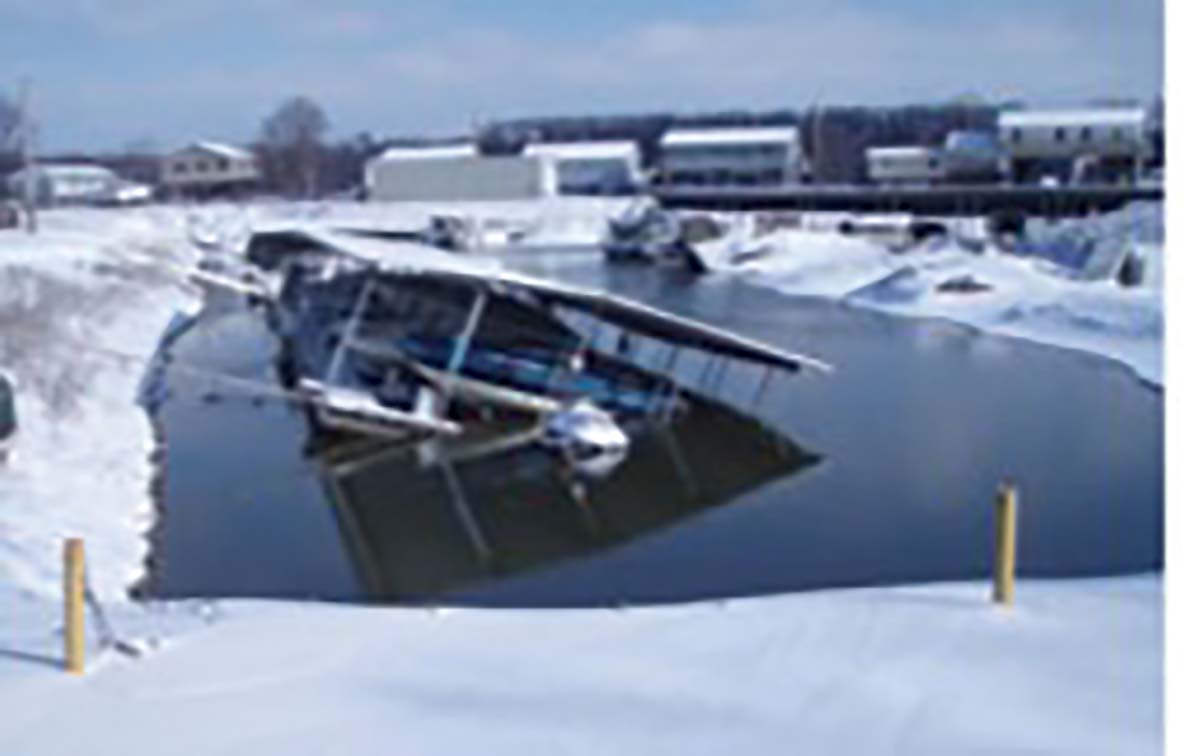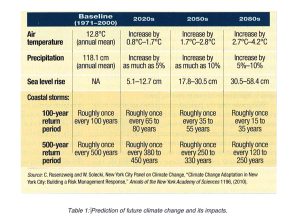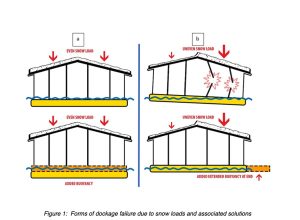
Snow, Snow, Snow
Published on February 27, 2024For those of you old enough to remember seeing the Bing Crosby and Danny Kaye movie, “White Christmas” you will remember one of the more enjoyable songs entitled “Snow.” Setting the stage to tickle your memory– Bing, Danny, Rosemary Clooney (yes, the aunt of George Clooney) and dancer Vera Ellen are on the train ride headed for Vermont, expecting to arrive there to find “mountains covered with a quilt of snow.” It seems that snow is inevitable. However, what happens when they arrive – surprise! – NO SNOW! Of course, the story gets complicated, but it all ends happily ever after with snow falling.
Does snow falling always end with a happily ever after? What about the sudden lack of snow, when for as long as anyone can remember there was always snow falling during the holidays? The long-range forecasts for this winter were based on a strong El Niño occurrence this year. In the Midwest, El Niño typically leads to warmer winters and less precipitation. Certainly, the warmer-than-normal December and a lack of snowfall in the upper Midwest seemed to validate that prediction. Then, mid-January came and plunged much of the country into deep freeze. Suddenly, we had heavy snowfalls appearing well into the south. So, what is going on? How can less precipitation, and warmer than normal temperatures suddenly end up giving us these diving temperatures and heavy dumps of snow?
We need to talk about climate change. You’ll notice we are speaking of “climate change” and not “global warming.” The arguments will continue to reign over the latter and whether it is man-made or not, but I think no one will argue that we are experiencing a different “climate” now than we may have felt decades ago. The word “climate” needs to be viewed and defined holistically.
Addressing Climate Change
Climate is much more than just the temperature or dampness outside, which is generally what we think about when asked about the subject. Day to day, we don’t think about how often storms occur, if they are more or less intense now, or if we go through longer or shorter growing seasons. Do the seasons even seem to shift a little? At least here in the Midwest, December recently feels more like November and the same for November being more like October. At the other end of the winter season, spring seems to be arriving much later too.
I suppose the earth spin could be changing, delaying everything, but more likely these are the less obvious effects of climate change. Will they continue at some predictable pace, accelerate, get worse, or trend back to the historic norm? Only time will tell, but for the foreseeable future we need to accept that something is going on, and discover what we should do to protect ourselves against its effects.
What is going on with climate change? First, let’s look at a less obvious range of possible implications. Shown in Table 1 is a summary of predicted outcomes extrapolated from the year 2000, as developed by the New York City Panel on Climate Change.
Table 1 was developed a decade ago, meaning it does not have the benefit of more recent, updated data. It does, however, allow us to attempt to validate some of the predictions. It predicts the now-obvious increase in mean temperature, but more importantly it looks at another variable that affects us most in terms of design and operations of facilities. That variable is the intensity of storm events. While using return period as a measure of intensity, the larger the event, the less likely it will be observed. A 30-mph wind could be a 20-year-event or maybe even a 50-year-event; it is the same wind either way. If we encounter it more often it may alter our perception of its severity. If we see the 30-mph wind more frequently, likely we plan for and deal with it better than if it only happens occasionally and is therefore out of our typical operating storm.

Table 1: Prediction of future climate change and its impacts.
From the projections given in the table, the event that was considered to be a 100-year event in 2000 now appears to be occurring with more regularity, making it only a 65 to 85-year event. Additionally, projecting further forward only a few more decades to 2050, certainly within the design life of our marina and coastal facilities, the strength of the event may be down to just a 35 to 50-year-event. If we built our marina or coastline to function for what was the 100-year event back in 2000 (or even earlier) the new 100-year event will be much larger, and our facility may potentially see failures it would not have experienced a few decades ago. Recognize that this climate impact is not only limited to events being stronger than before, additionally we are now seeing that climate may influence the duration of an event. It can become a problem of quantity as much as quality, as a 50-mph wind blowing for three days may produce more damage than an 80-mph wind blowing for two hours. It is the same with rainfall, as we have seen in recent flooding events.
While it may be true, based on historic experience, that El Niño leads to warmer temperatures and less precipitation in general, this fact is being overridden by other changing climatic effects. By reducing the return period of any event, we see it occur more frequently. We will see more exaggerated fluctuations, and our facilities may not be equipped to counter those more frequent and wild extremes in changing conditions.
A Shift in Design
This brings us back to the topic of this discussion – snow. Snow may fall and hurt us even if ice is not forming on the water. The combination of potentially stronger events that occur more often creates the need to figure out what to change in our approach to designing for the future. This is a change in our shift to design, as we must think beyond only minimum building codes and the use of adequate materials. Snow loading on marina facilities is generally only a problem if the slips are covered. Traditionally, the roof systems on floating docks have been intentionally designed as very light-weight support frame assemblies, minimizing the need for added buoyancy and reducing the added cost to the base dock system. With enough snow load, however, compounded by wind, those structural features can be quickly compromised.
In a Marina Dock Age article in January 2019, I first discussed the need for added buoyancy capacity when roof snow load is involved, and also introduced a discussion of the types of failures that might be anticipated. Figure 1 is reproduced from that article to reacquaint you with the possible failure modes and suggestions of what is needed to compensate for them.
If it were as simple as just adding more buoyancy to compensate for the added vertical load, there would be no issue, as shown in Figure 1. The more general problem is related to how the roof system is supported with the light-weight frame system. The slender columns supporting the roof have little if any capacity to resist what is called “eccentric loading.” They implicitly assume the load is purely vertical. If the dock is suddenly leaning a few degrees due to uneven snow accumulation on its roof, then the roof’s frame is no longer carrying the vertical load axially down its support members. If these thin members simply buckle and break, the roof collapses, causing damage to the docks and to any boats moored beneath them. Marinas in Tennessee and Kentucky experienced dock roof failures this past winter. In these cases, the roof collapsed over the docks by the roof leaning, whether pushed by the wind or being overloaded with snow on just one side, leading to the columns bending and buckling.
How should we start designing dock systems that anticipate the changing climatic conditions of the future? What would be a resiliently designed dock system? For starters, we need to step out of our comfortable roles as civil engineers and recognize that these are floating docks, not buildings fixed to the ground. Instead, we need to start thinking like naval architects and recognize that these structures move with different winds, waves, and load applications and start designing them accordingly. That is the basis of the design solution shown in Figure 1.

To give a simple example of changing our paradigm to start creating more resilient designs from things we already know, consider this; I take a pound of meat from the freezer and place it in a casserole dish slightly bigger than the piece of meat itself. I place the meat in a sink full of water to start thawing. The casserole dish sinks into the water an inch or so but does not submerge. I now take that same piece of meat and instead place it on a cookie sheet with slightly raised edges and put that in the water. The cookie sheet also sinks into the water, but just slightly; certainly nowhere near as deeply as the casserole dish did. Both dishes supported the same piece of meat, but one sunk much deeper into the water than the other. This experiment shows that wider vessels can spread the load out, sinking less, and thus have less tendency to lean and roll.
If we take that same understanding back to our marina, we can leverage that to solve many, if not all the snow load problems that are bending our roof columns. There is nothing wrong with using the lightweight support columns for the roof, we just do not want them to tilt off vertically. By repositioning or reshaping our buoyancy billets under the dock, we can change the way the floating dock reacts to the eccentric loading, whether from wind or snow, keeping everything vertical and more manageable, thus reducing the chance for failure.
What does this mean for the future design of marinas considering increasing wind or snow loads? Well, likely one of two things: we start making our fingers a little longer, perhaps even longer than the eave of the roof, which increases what is called the “righting moment” or the moment arm of the dock so it better resists leaning. Also, or alternatively, we start making our docks, especially the dock fingers, wider like the cookie sheet versus the casserole dish. The added width means the draft (and freeboard of the dock), will change much less so that there is less chance of leaning, keeping those columns more vertical and resulting in less chance for roof collapse.
Thinking Differently
Does this mean we need to think about designing docks and marina layouts differently to be more resilient in the future? Yes; but no one ever complains that their dock fingers are a little wider when they are accessing their boat. You might also argue that making the fingers longer intrudes onto the fairway’s width. That is true, but it does not change the required fairway width if the same size boat is berthed in that slip. In fact, if you really dig back into guidance for finger lengths, the recommendation was always for fingers to be 10% longer than the boat length; we just got greedy and allowed bigger boats to use the slip.
So, in conclusion, yes, there are solutions to creating a more resilient marina dock system for the future, one that should better accommodate ever increasing snow loads and similarly more severe wind events. We simply must become holistic in our thinking and approach to design. We need to reconsider that just because it used to be done one way does not mean it was the right way or is the right way anymore.
Jack Cox, PE, is a coastal engineer at Edgewater Resources. He can be reached at jcox@edgewaterresources.com.
| Categories | |
| Tags |






